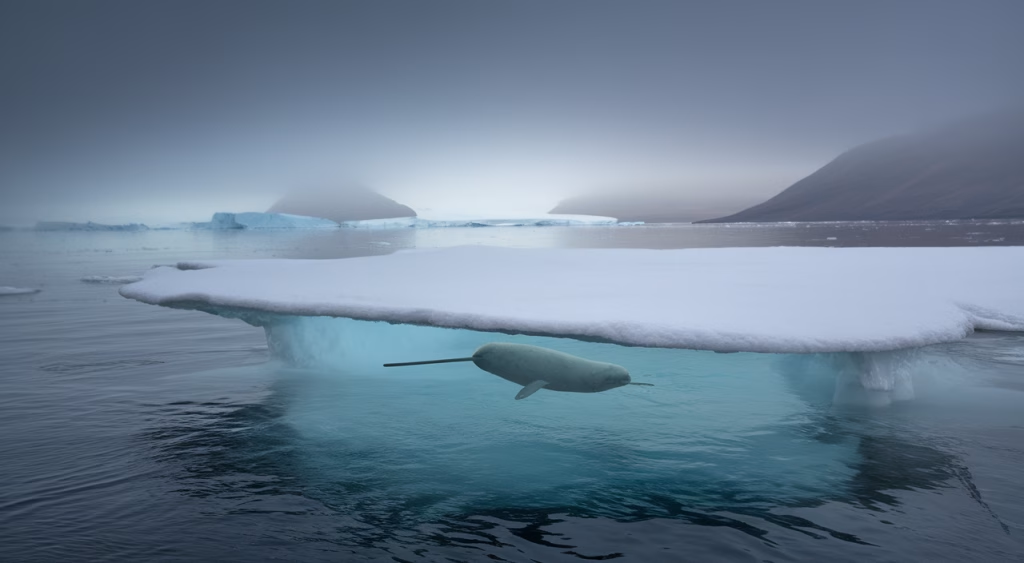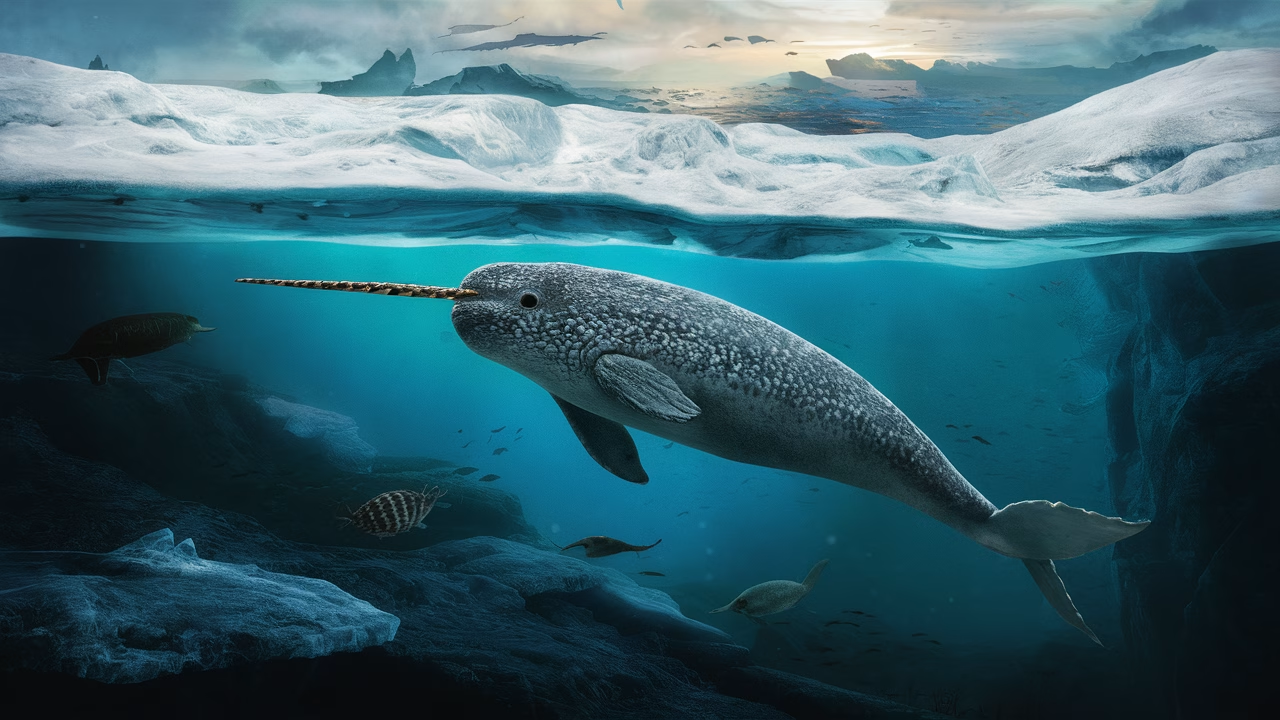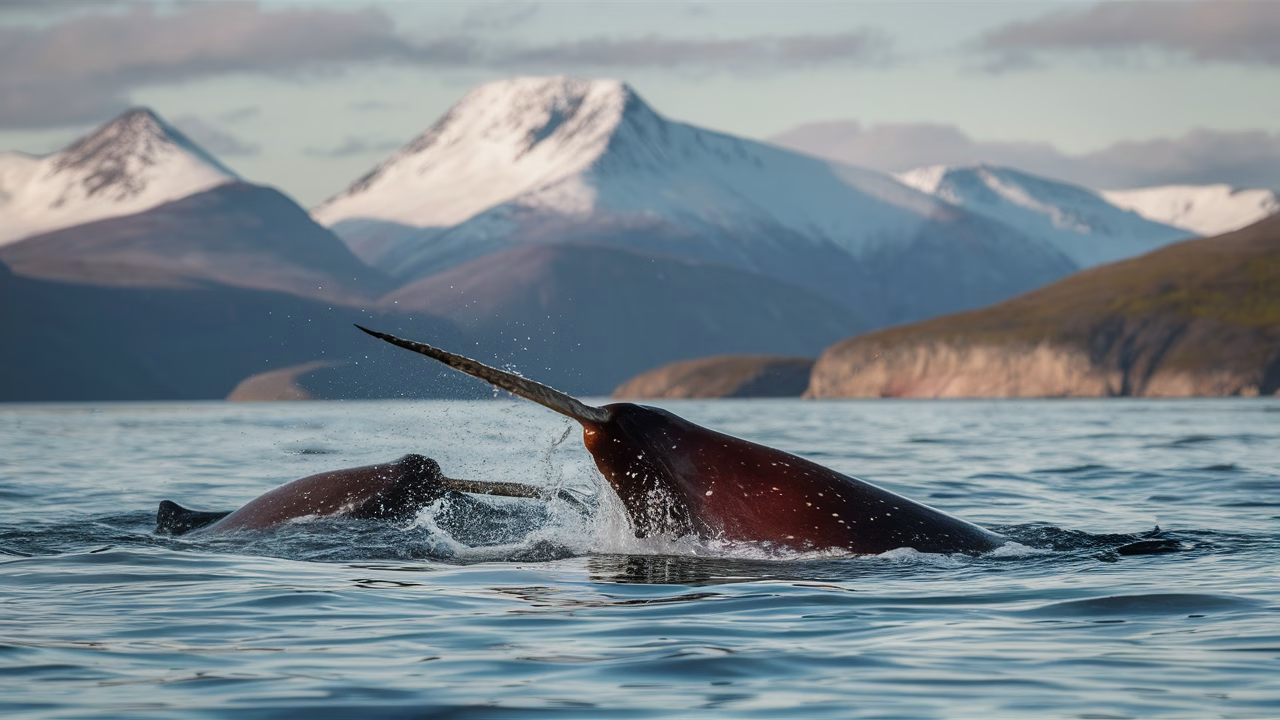How Deep Can Narwhals Dive – And How Do They Survive the Pressure?
Narwhals have been recorded diving over 1,500 meters deep into the Arctic Ocean. But how can a marine mammal survive such extreme pressure and low oxygen environments? The short answer: with an arsenal of extraordinary adaptations that defy biological expectations.
TL;DR: The Remarkable Depths of Narwhal Diving
- Deepest Recorded Dive: Over 1,800 meters (almost 1.1 miles beneath the surface).
- Duration: Individual dives can last up to 25 minutes.
- Adaptations: Collapsible ribcages, slow heart rates, and myoglobin-rich muscles protect them from collapsing lungs and oxygen shortages.
- Purpose: Most dives are made in search of deep-sea squid, cod, and other prey under dense ice layers.
- Threats: Climate change, oil drilling, and increased Arctic shipping disrupt feeding and migration routes.
- Conservation Status: Considered near-threatened due to habitat change and human interference.
Narwhal: The Unicorn of the Sea
To understand narwhal diving, we must first understand the narwhal itself. Narwhals (Monodon monoceros) are medium-sized toothed whales that inhabit the frigid waters of the Arctic Ocean. What makes them iconic is their single, spiraling tusk — essentially an extended canine tooth — that has earned them the nickname ‘unicorns of the sea.’
These remarkable marine mammals are elusive creatures rarely seen in the wild, spending their lives beneath floating ice. Unlike most whales, narwhals don’t migrate to warmer waters but remain in Arctic regions year-round, making them perfectly adapted to their extreme environment.
The Incredible Diving Abilities of Narwhals
Imagine plunging into pitch-black, freezing waters a mile beneath the surface where water pressure is over 150 times greater than what you experience at sea level. For narwhals, this extreme environment is their hunting ground. These deep-diving marine mammals hold the record for the deepest and longest dives of any Arctic cetacean.
Biomechanics of a Dive: Going Beyond Human Limits
When narwhals dive deep, their bodies undergo remarkable transformations. Their rib cages collapse under pressure, reducing air spaces and preventing decompression sickness. They slow their heart rates dramatically to conserve oxygen — a critical narwhal behavior that allows their muscles, rich in oxygen-binding proteins like myoglobin, to continue functioning during oxygen-deprived dives.
What Are They Hunting So Deep?
Food is the primary driver behind these extreme narwhal diving expeditions. Tagged narwhals have revealed that they target polar cod, halibut, and squid living near the sea floor. These prey species inhabit deep pelagic zones, well below surface waters. Most narwhal dives involve foraging beneath pack ice, guided by echolocation clicks that help them navigate in complete darkness.
Research shows that narwhals often execute multiple dives in sequence, descending 20–30 times per day to depths over 500 meters — with the most extreme dives reaching north of 1,500 meters.
Data Table: Narwhal Dive Metrics
| Parameter | Typical Range |
|---|---|
| Average Dive Depth | 500–800 meters |
| Maximum Recorded Depth | Over 1,800 meters |
| Average Dive Duration | 10–15 minutes |
| Max Dive Duration | 25 minutes |
Threats to Narwhal Populations
Like many Arctic wildlife species, narwhals face mounting human-made challenges. Climate change is radically reshaping their icy habitat, while industrial activities threaten their survival. Understanding these threats is crucial for narwhal conservation efforts.
Climate Change and Ice Collapse
Retreating sea ice disrupts narwhal behavior and introduces predators like orcas into previously secure areas. Warmer waters also shift fish distributions, making narwhals’ traditional prey harder to find at established hunting locations.
Increased shipping and oil exploration in the Arctic bring rising noise pollution. Since narwhals rely on echolocation for hunting and orientation, this background noise can disorient them or prevent successful foraging — compromising their ability to navigate safely under ice sheets.
Pollution also contaminates their prey, leading to bioaccumulation of heavy metals and toxins in narwhal populations — a concerning trend researchers have documented over the past two decades.
Conservation Efforts to Protect Narwhals
As marine biologists and wildlife advocates, we understand the urgent need to protect these deep-diving marine mammals. What conservation strategies can help ensure narwhal survival?
Fortunately, targeted conservation projects and protective policies are showing promise.
Ongoing Initiatives
Institutions in Canada and Greenland — the heart of narwhal range — are establishing seasonal marine protected areas (MPAs) in critical fjords like Eclipse Sound. These MPAs protect calving grounds and migration corridors from industrial development.
Satellite-tagging research programs improve our understanding of narwhal diving patterns, migration routes, and habitat requirements. We use this data to advocate for restrictions on seismic testing and shipping during critical breeding and feeding periods.
Traditional knowledge from Inuit communities also informs modern narwhal conservation, combining oral history with ecological science. Indigenous-led advocacy has become essential in negotiations about sustainable hunting, habitat protection, and industrial restrictions.
Observing Narwhals in Their Arctic Habitat
Want to witness narwhal diving behavior in the wild? While challenging, it’s possible with proper planning and respect for these sensitive marine mammals. Narwhal watching requires cold weather gear, logistical coordination, and collaboration with local Inuit communities who know where these cryptic creatures gather.
Some fjords in northern Baffin Island (like Tremblay Sound) host predictable narwhal aggregations during summer months. Remember: sound, scent, and excessive activity can disturb narwhals. Successful observation demands a low-impact, respectful approach — often from a stable kayak or quietly drifting vessel.
You’ll leave with more than photographs — you’ll gain deep respect for life thriving at the edge of existence.
Cost Guide for Narwhal Habitat Tours
| Experience Type | Approximate Cost (USD) |
|---|---|
| Guided Narwhal Photography Tour | $4,000–$8,000 |
| Community-Based Day Excursion | $500–$1,200 |
| Private Wildlife Research Charter | $10,000+ |
Final Thoughts
Narwhals remind us that marine biology still holds incredible mysteries — that in our modern world, there exists a creature who quietly dives deeper into the Arctic depths than most submarines venture. Protecting their extraordinary diving abilities means preserving ice-bound ecosystems and listening to both scientific data and Indigenous wisdom. When you hear about Arctic ice melting, remember: it’s not just about ice. It’s about the unicorn that swims beneath it, diving to depths that challenge our understanding of what marine mammals can achieve.
Frequently Asked Questions
- How deep can narwhals really dive?
- Narwhals have been recorded diving over 1,800 meters deep into the Arctic Ocean, making them some of the deepest-diving marine mammals.
- Why do narwhals dive so deep?
- Narwhals dive deep to hunt prey such as Greenland halibut and squid, which reside near the seafloor in Arctic waters.
- Are narwhals endangered?
- While not officially endangered, narwhals are considered near-threatened due to climate change, increasing industrial activity, and pollution in their Arctic habitat.
- What adaptations help narwhals dive so deep?
- Narwhals utilize collapsible lungs, high myoglobin concentration in muscles, and reduced heart rates to withstand the pressure and lack of oxygen during deep dives.
- Where can I see narwhals in the wild?
- Remote Arctic regions like Nunavut, Canada (especially Baffin Island) are known for summer narwhal sightings, often through community-led eco-tours.
- What role do Indigenous communities play in narwhal conservation?
- Inuit communities contribute vital knowledge about seasonal migration and hunt sparingly under strict quotas, aiding sustainable cohabitation and research.





